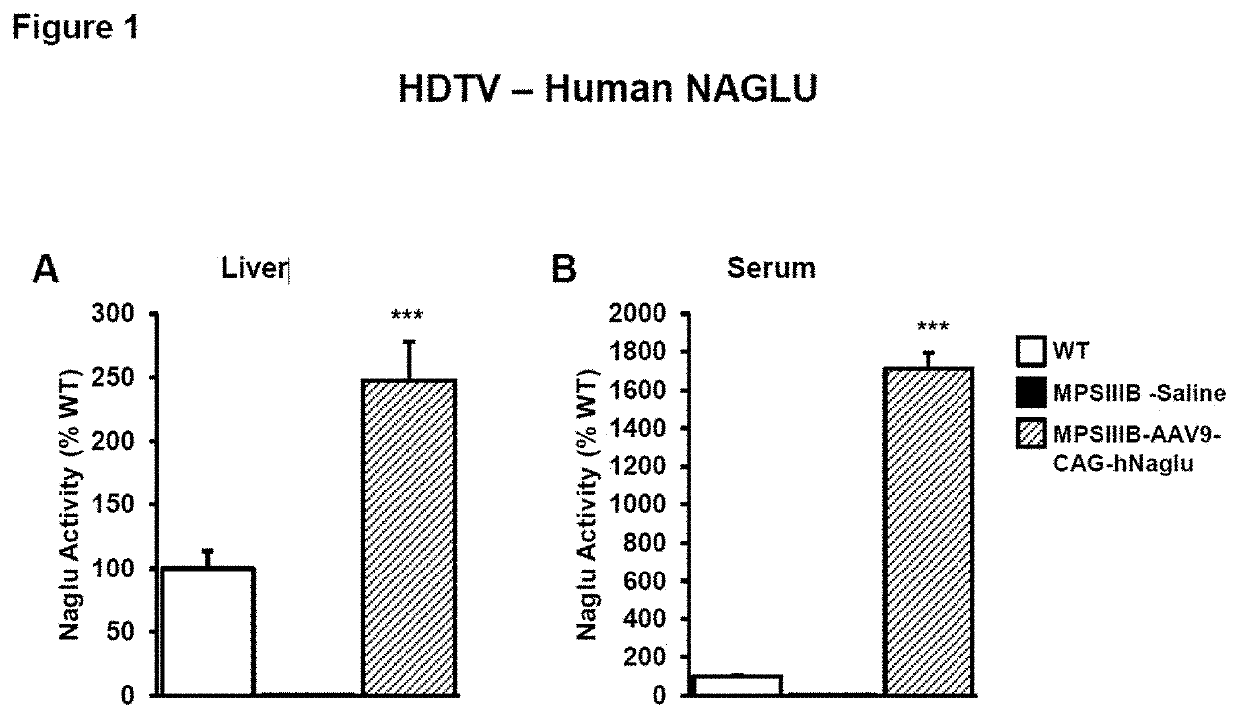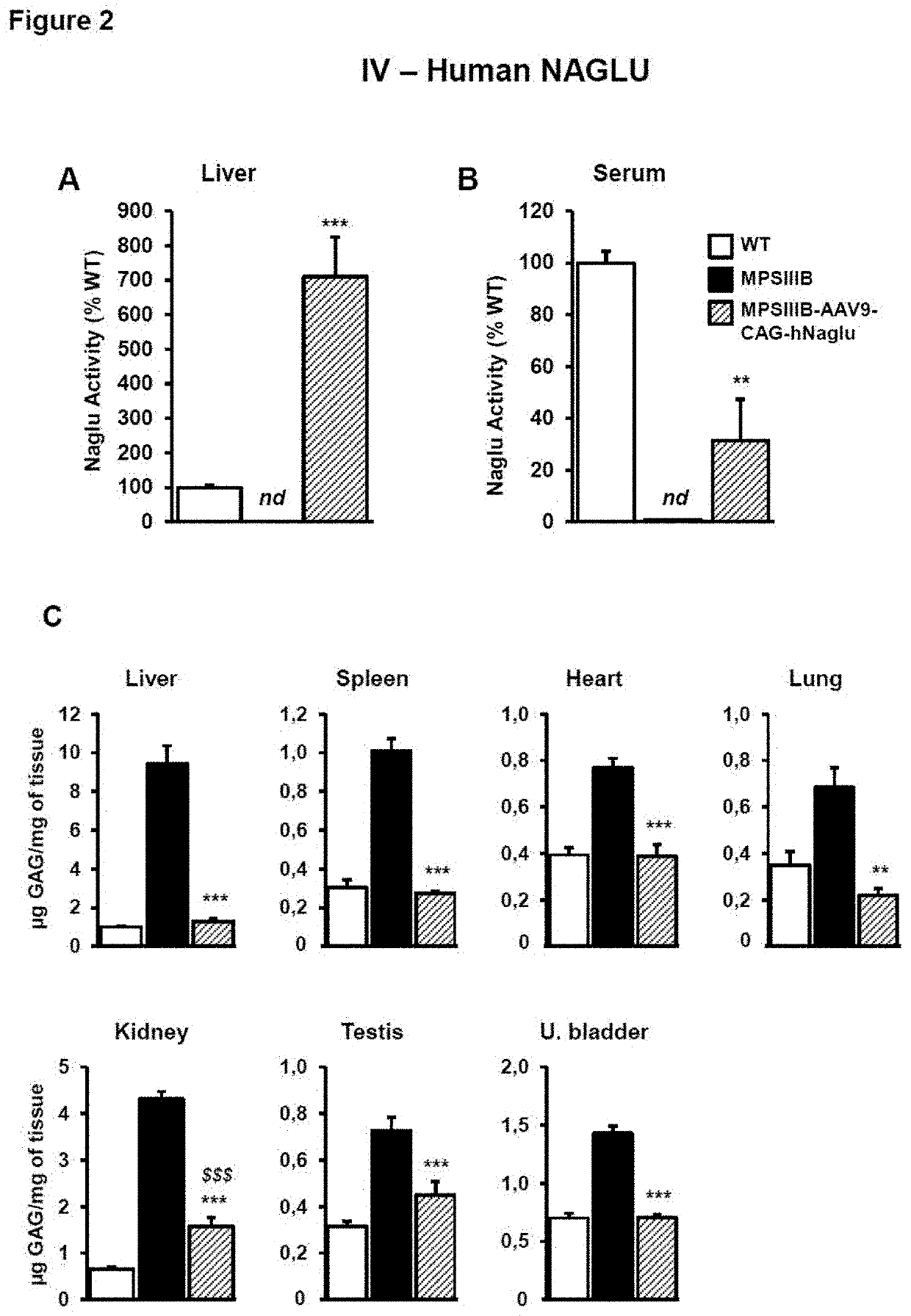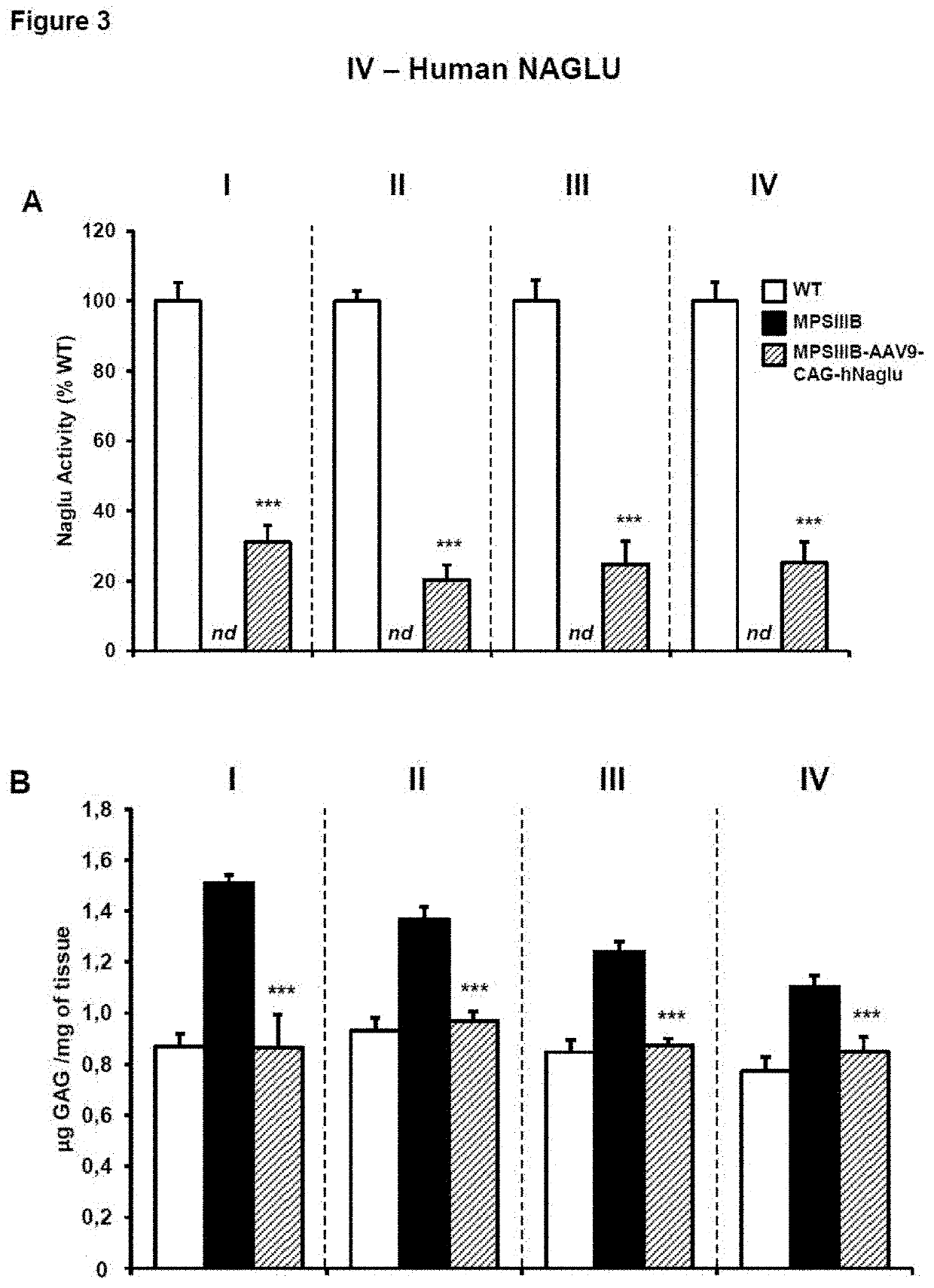Adenoassociated virus vectors for the treatment of lysosomal storage disorders
a technology of lysosomal storage and virus vector, which is applied in the field of lysosomal storage disorder virus vectors for the treatment of lysosomal storage disorders, can solve the problems of progressive intellectual decline, severe behavioral problems, and particularly afflicted groups in the general population
- Summary
- Abstract
- Description
- Claims
- Application Information
AI Technical Summary
Problems solved by technology
Method used
Image
Examples
example 1
ion of pAAV-CAG-hNaglu
[0145]The human N-acetylglucosaminidase, alpha coding sequence (CDS) was utilized as starting material (NCBI Reference Sequence: NM_000263) and chemically synthesized for this purpose (GeneArt; Life Technologies). The CDS was received cloned inside the plasmid pMA (AmpR) flanked by MluI and EcoRI restriction sites at 5′ and 3′ ends, respectively. N-acetylglucosaminidase, alpha CDS was excised by MluI / EcoRI digestion and then cloned between the MluI and EcoRI restrictions sites of the AAV backbone plasmid pAAV-CAG (AmpR). The resulting plasmid was named pAAV-CAG-hNaglu (accession number DSM 28568). See SEQ ID NO: 5, and FIG. 19 A.
[0146]The pAAV-CAG plasmid had been previously generated and contained the ITRs from the AAV2 genome, the CAG promoter, and the polyA signal from rabbit β-globin, as well as a multicloning site for cloning of CDSs of interest. The CAG promoter is a hybrid promoter composed of the CMV early / intermediate enhancer and the chicken β-actin p...
example 2
n of AAV9-CAG-hNaglu
[0147]Vectors AAV9-CAG-hNaglu (SEQ ID NO: 9 and FIG. 19 B)) were generated by helper virus-free transfection of HEK293 cells using three plasmids with modifications. See Matsushita, 1998, supra and Wright, 2005, supra. Cells were cultured to 70% confluence in roller bottles (RB) (Corning, Corning, N.Y., US) in DMEM supplemented with 10% FBS and then co-transfected with: 1) a plasmid carrying the expression cassette flanked by AAV2 ITRs (pAAV-CAG-hNaglu); 2) a plasmid carrying the AAV2 rep and the AAV9 cap genes (pREP2CAP9); and 3) a plasmid carrying the adenovirus helper functions. Vectors were purified by two consecutives cesium chloride gradients using either a standard protocol or an optimized protocol as previously described. See Ayuso, 2010, supra. Vectors were dialyzed against PBS, filtered, titred by qPCR and stored at −80° C. until use.
example 3
ion of pAAV-CAG-cohNaglu
[0148]Expression cassettes including an optimized version of the human N-acetylglucosaminidase, alpha CDS (cohNaglu) were designed and obtained. The sequence optimization (GeneArt®) was performed to maximize the efficiency of N-acetylglucosaminidase, alpha protein production in human beings through elimination of cryptic splice sites and RNA destabilizing sequence elements for increased RNA stability, addition of RNA stabilizing sequence elements, codon optimization and G / C content adaptation, avoidance of stable RNA secondary structures amongst others changes. The optimized CDS was received cloned in the plasmid pMA-RQ (AmpR) flanked by MluI and EcoRI restriction sites at 5′ and 3′, respectively.
[0149]The pMA-RQ-cohNaglu plasmid was digested with MluI and EcoRI to excise the optimized N-acetylglucosaminidase, alpha CDS. Subsequently, this fragment was cloned between the same restriction sites of the pAAV-CAG backbone plasmid to generate the pAAV-CAG-cohNaglu...
PUM
| Property | Measurement | Unit |
|---|---|---|
| pH | aaaaa | aaaaa |
| volume | aaaaa | aaaaa |
| volume | aaaaa | aaaaa |
Abstract
Description
Claims
Application Information
 Login to view more
Login to view more - R&D Engineer
- R&D Manager
- IP Professional
- Industry Leading Data Capabilities
- Powerful AI technology
- Patent DNA Extraction
Browse by: Latest US Patents, China's latest patents, Technical Efficacy Thesaurus, Application Domain, Technology Topic.
© 2024 PatSnap. All rights reserved.Legal|Privacy policy|Modern Slavery Act Transparency Statement|Sitemap



